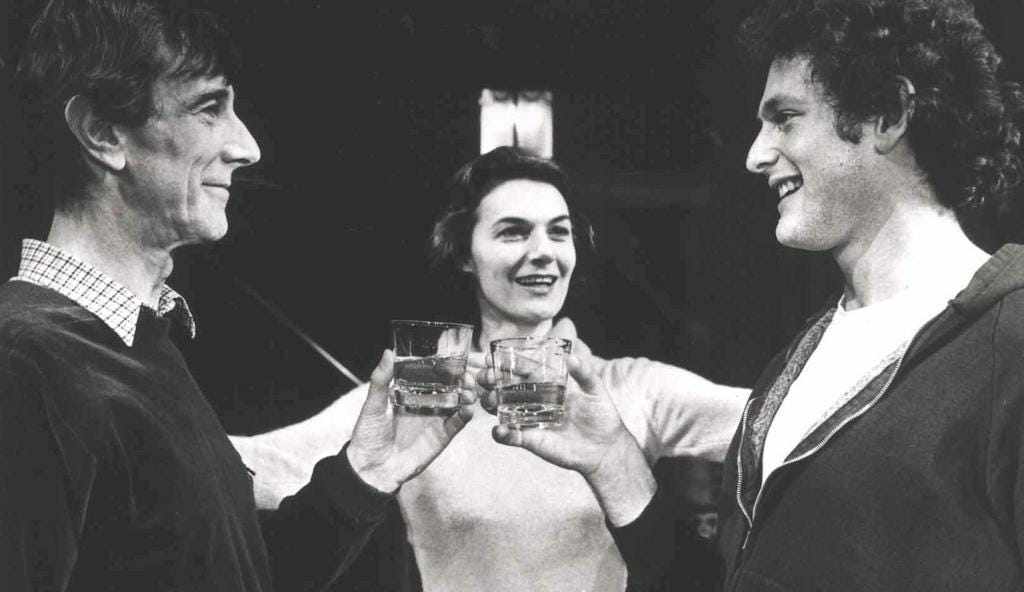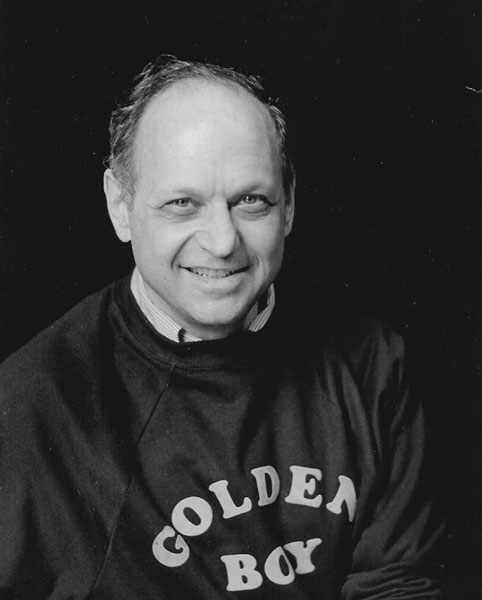
Paul Muni was an actor of stage and screen who reigned supreme as a star of the first magnitude in the 1930s. Warner Bros even signed him to a seven-year contract and billed him with a certain awe as "Mr. Paul Muni." No one else was ever afforded that honor during the heyday of motion pictures, but mainly due to the fact he only made 22 films, his name means little now compared to that of contemporaries such as Spencer Tracy or Humphrey Bogart. But Muni was a singular talent, with a wonderful backstory, and is the subject of today's "Theatre Yesterday and Today."
When I was a teenager in the 1970s, the only way to slake my thirst for old movies was seeing them in chopped up versions on television. Sad in this day of streaming, but I was forced to watch genuine classics littered with commercials popping up so often that entire sequences had to be cut (the Singin' in the Rain I first encountered was in a ninety-minute time slot and didn't include Donald O'Connor's "Make 'em Laugh"—sacrilege!). However, my interest was so great that I hardly minded viewing butchered masterpieces (even technicolor was in black and white, as my family was the last on our block to purchase a color TV set). Yet when I caught my first glimpse of Paul Muni in a severely edited I Am a Fugitive from a Chain Gang on a tiny screen, this gritty 1932 crime drama retained its striking power. Even in the early days of my figuring out what constituted a great actor from a good one, I could tell that Muni was the real deal. After him, I looked at movie acting very differently. His performance as a convict forever on the run haunted my dreams—and for good reason. The final moments of that film with Muni retreating into darkness is one of the most chilling climaxes ever put on film... even after close to ninety years.

Honed by his many years on the stage, Muni brought his abilities as a skilled makeup artist when he began his film career. Add to that a commanding voice, which he could use with great virtuosity; so much so that a critic once wrote that "a Muni whisper could reach the last balcony of any theater." This put him in good stead when in 1927 The Jazz Singer, the first "all-talking film," forced Hollywood to raid Broadway in finding anyone with stage experience in the hopes they could speak equally well for the camera, Muni became that rare thing: a character actor thrust into the position of leading man by virtue of his talent, and not by his looks or romantic possibilities. The result of his first time on film was an Academy Award nomination The Valiant (he also received one for his final one, The Last Angry Man, something only one other actor has accomplished—and that was in the sorry case of James Dean's early death).

Muni became famous mostly for essaying historical characters, portraying multiple nationalities and ethnicities that belied his Jewish heritage. In his second film, Seven Faces, tailored especially for him and his makeup skills, he played Don Juan and Napoleon in addition to five others (sadly, Seven Faces, for which he received his second Academy Award nomination, no longer exists and is considered a "lost" film). Photos show his versatility, though unfortunately also what was then the norm of portraying someone of a different race by donning "blackface."

He was French in both The Story of Louis Pasteur (1936)—for which he won the Oscar—and The Life of Emile Zola (1939). He starred opposite Bette Davis as Mexican President Benito Juarez in Juarez (1939); he was a Polish musician in A Song to Remember; and perhaps closest to his real self as an aging Jewish doctor in the aforementioned Last Angry Man (1959). And though played very broadly, his fake Italian accent as Tony Camonte in the original Scarface (1932) has nothing on Al Pacino's Cuban one in the 1983 remake. Not all critics were enamored of Muni's style. British film historian David Thompson found him "a crucial negative illustration in any argument as to what constitutes screen acting." I will admit that some of his acting does look pretty hammy today... but then there are times he just nails things with a genuine poignance or bravado that can be simply stunning.

Born Muni Weisenfreund on September 22, 1895 in Lemburg, in Austria-Hungary, Muni was constantly on the move with his parents who were traveling actors. Spending time all over Europe, the family came to America when Muni was six. In the manner of the tradition of the Yiddish theatre, young boys played old men—and Muni was no exception, even proving exceptional. Making his stage debut at age eleven, he played an old man in a sketch called Two Corpses at Breakfast. By the time he was eighteen, he was earning $15 a week as an actor (which was a good salary in 1913). Then, from the age of twenty-two on, he spent years as a leading player with Maurice Schwartz's fabled Yiddish Art Theatre on Second Avenue. He didn't appear in an English-speaking play until We Americans in 1926 on Broadway. He was billed as Muni Wisenfrend (misspelled as "Mimi" in the New York Times cast list), which hopefully made the young actor laugh. Though what probably elicited a bigger laugh was when in his review, the critic wrote: "There is an authentic performance of an old man by an actor named Muni Wisenfrend." Muni was thirty-one.

Though he only appeared in ten Broadway plays, his greatest triumph came when he created the role of Henry Drummond (a thinly disguised Clarence Darrow) in Jerome Lawrence's and Robert E. Lee's Inherit the Wind, the world-famous play about the 1925 Scopes Monkey Trial. At the age of sixty, and just a few years after portraying Willy Loman in the London premiere of Death of a Salesman, Muni received the reviews of his career for Inherit the Wind. It was a triumph and a sellout, but during the run, he was forced to leave for treatment of a cancer that was found behind his eye. He returned to the play months later and enjoyed a few more months of acting live in front of an audience, but from then on, gradually slipped into a forced retirement due to blindness and other ailments. He died in 1967 at the age of seventy-one.

In 1974, a biography titled Actor was published, written by the co-author of Inherit the Wind, and a good friend of Muni's, Jerome Lawrence. Not only did Lawrence have many hours with Muni from which to draw on, but he also had an unfinished book by Muni's wife of 46 years, Bella, who had begun a memoir she titled The Men I Have Lived With. Bella had a tremendous influence on Muni, everything from how he dressed to the roles he played. She was even on the set for every film, nodding after a take whether another one was needed or not.
I remember reading Actor (while still a teenager who desperately wanted to be one) and decreeing it my favorite biography I'd ever read. I doubt these many years later that praise would hold up, but I do recall it was rich in detail and conjured up an era that, much like Muni, was once a glorious part of a distant past.
If you enjoy these columns, check out Up in the Cheap Seats: A Historical Memoir of Broadway, available at Amazon.com in hardcover, softcover and e-book. And please feel free to email me with comments or questions at Ron@ronfassler.org.





















Write a comment ...